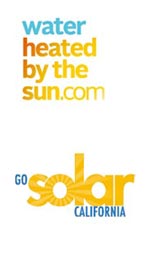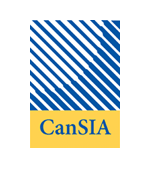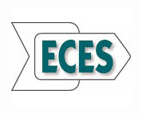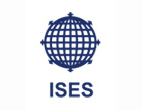Press Releases SHC 2012, San Francisco
- on 10 July 2012: Fred Morse receives 2012 SHC SOLAR AWARD
- on 9 July 2012: IEA finds huge potential to replace fossil fuels and electricity with solar heating and cooling
- on 19 January 2012: SHC 2012 conference: IEA to present technology roadmap for solar heating and cooling
- on 1 December 2011: Canadian community stores summer’s solar heat for the winter – IEA SHC project wins Energy Globe Award
- on 7 September 2011: 1st International Conference on Solar Heating and Cooling for Buildings and Industry
Fred Morse receives 2012 SHC SOLAR AWARD
10 July 2012. Dr. Frederick H. Morse is this year’s winner of the SHC SOLAR AWARD of the IEA Solar Heating and Cooling Programme. He received the award yesterday at the SHC 2012 conference in San Francisco, USA. For many years, Dr. Morse has been an outstanding promoter of solar energy and served the IEA SHC between 1976 and 2007 in various roles – amongst others, as its first chairman.
The SHC SOLAR AWARD is given to an individual, company, or private/public institution that has shown outstanding leadership or achievements in the field of solar heating and cooling, and that supports the work of the IEA Solar Heating and Cooling Programme.
“Fred became involved in solar energy in the late 1960s and quickly became an international leader in promoting the development and use of renewable energy technologies. He has shaped not only the IEA Solar Heating and Cooling Programme with his bright ideas and his enthusiasm, but has been at the forefront of convincing national and international stakeholders to support R&D as well as the implementation of renewable energies”, said IEA SHC chairman Werner Weiss in his laudation.
Working in senior‑level positions at the US Department of Energy in the late 1970s and 1980s, Dr. Morse played a significant role in defining and managing major solar energy research, development and commercialization programs with annual budgets of up to $250 million. When the IEA was formed in 1976, Dr. Morse became a member of the Solar Heating and Cooling Executive Committee and was elected as its first Chairman. When Dr. Morse left the Department of Energy in 1989, he was elected to serve as Advisor to the IEA Solar Heating and Cooling Executive Committee, a position he held until 2007.
Dr. Morse served in several public and private organisations, including the US Solar Energy Industry Association (SEIA), and the International Solar Energy Society (ISES). In 1989 Dr. Morse founded Morse Associates, a renewable energy consulting firm that provides critical strategic planning and support services to energy companies, industry groups, government agencies, international organizations and others.
In his various roles Dr. Morse always displays sharp thinking and creative ideas, which he uses to further the growth of renewable energy technologies worldwide.
“Fred has fought for solar energy long before others saw it as a viable alternative to our fossil and nuclear based energy supply”, said Doug McClenahan of the IEA SHC Executive Committee.” It is an honour to have worked side-by-side with him for our common goal.”
Further information:
IEA SHC website: www.iea-shc.org
Pictures of the SHC SOLAR AWARD ceremony on 9 July 2012:
- Doug McClenahan, chairman of the SHC SOLAR AWARD committee (l) and Dr. Frederick H. Morse (r): http://www.flickr.com/photos/iea-shc/7544926230/in/set-72157630516185008/
- Werner Weiss, chairman of the IEA SHC Executive Committee (l) and Dr. Frederick H. Morse (r): http://www.flickr.com/photos/iea-shc/7544395524/in/set-72157630516185008/
About the International Energy Agency’s Solar Heating and Cooling Programme (IEA SHC):
- The Programme was established in 1977.
- Its objectives are co-operative research, development, demonstration and exchange of information regarding solar heating and cooling systems.
- 20 countries and the European Union are IEA SHC members.
- The research topics of the current 9 projects range from more general topics, such as “Solar resource assessment and forecasting” , system research, such as “Large solar thermal systems” to material research, such as the use of “Polymeric materials for solar thermal applications.”
- Additional information: www.iea-shc.org
Contact information:
IEA SHC information centre:
Uwe Trenkner, communications@iea-shc.org
IEA finds huge potential to replace fossil fuels and electricity with solar heating and cooling
San Francisco 9 July 2012. At the International Conference on Solar Heating and Cooling in Buildings and Industry, SHC 2012, Paolo Frankl of the International Energy Agency presented their technology roadmap for solar heating and cooling. The document identifies a potential by 2050 of 430 Mtoe (18 EJ). The IEA finds “a stable, long-term policy framework for solar heating and cooling” the key task for the coming decade to realise the vast potential.
“The IEA’s Solar Heating and Cooling Roadmap confirms the great opportunity that lies in using solar thermal to replace fossil fuels and electricity”, says Werner Weiss, chairman of the IEA Solar Heating and Cooling Programme, which provided important expertise to the roadmap.” It rightly identifies reliable long-term framework conditions as the key challenge for the coming years. And, it does not overlook the role of non-economic factors that currently hinder an even quicker adoption of solar thermal energy technologies”.
Amongst the solar thermal applications, hot water production and space heating are the most important. By 2050, 213 Mtoe (8.9EJ) could be covered by solar energy, the IEA finds. The nascent market for solar heat for industrial processes could be the second largest with 171 Mtoe (7.2 EJ) in 2050. Solar swimming pool heating and solar cooling could provide another 45 Mtoe (1.9 EJ).
The IEA calls on all stakeholders to work toward realising the vision outlined in the roadmap. With a specific call for governments to take a lead role in creating a favourable investment climate by creating a stable, long-term policy framework for solar heating and cooling. Sudden changes in available financial support have proven detrimental to the development of a healthy solar thermal industry in many countries. Therefore, the IEA concludes, economic incentive schemes should be independent from state budgets to avoid “stop-and-go”.
However, support policies should not only focus on economic aspects. In many regions of the world, solar thermal is already cost-competitive with conventional technologies, but barriers, such as higher upfront investment and lack of trained installers keep people from choosing solar heating and cooling.
Technological development could provide another strong impetus to solar heating and cooling. While many mature products exist for solar hot water and space heating, more R&D could jump-start the adoption of solar heating and cooling solutions in emerging areas, such as heat for industrial processes and cooling. Governments should provide the necessary R&D funds to support these developments.
“We can only underline the importance of research, demonstration and development”, says IEA SHC chairman Weiss.” Our Programme provides a very successful framework for international cooperation in the research on solar thermal and solar buildings. By working together, governments can help achieve our even more ambitious goal: To supply, by 2030, 50% of the low-temperature heat demand with solar energy”.
Further information:
- IEA Roadmap on SHC: www.iea.org/publications/freepublications/publication/2012_SolarHeatingCooling_Roadmap_FINAL_WEB.pdf
- IEA’s own news release on the roadmap: www.iea.org/newsroomandevents/news/2012/july/name,28298,en.html
- IEA SHC website: www.iea-shc.org
About the International Energy Agency’s Solar Heating and Cooling Programme (IEA SHC):
- The Programme was established in 1977.
- Its objectives are co-operative research, development, demonstration and exchange of information regarding solar heating and cooling systems.
- 20 countries and the European Union are IEA SHC members.
- The research topics of the current 9 projects range from more general topics, such as “Solar resource assessment and forecasting” , system research, such as “Large solar thermal systems” to material research, such as the use of “Polymeric materials for solar thermal applications.”
- Additional information: www.iea-shc.org
Contact information:
IEA SHC information centre:
Uwe Trenkner, communications@iea-shc.org
SHC 2012 conference: IEA to present technology roadmap for solar heating and cooling
19 January 2012. The 1st International Conference on Solar Heating and Cooling for Buildings and Industry, SHC 2012 in San Francisco, will feature the IEA’s presentation of their forthcoming roadmap on solar heating and cooling. For all conference topics, abstracts can still be submitted until 31 January 2012.
“On request of the G8, IEA is currently finalizing a roadmap for solar heating and cooling,” says the chairman of the IEA Solar Heating and Cooling Programme, Werner Weiss. “In 2011, four expert workshops were held on different continents to gather additional input. We are looking forward to the roadmap’s publication in spring and have invited the IEA to present it at our SHC 2012 conference, which takes place 9-11 July in San Francisco”.
A series of IEA technology roadmaps were requested by the G8 to provide solid analytical footing that enables the international community to move forward on specific technologies. As stated in the published roadmaps, each of them develops a growth path from today to 2050, and identifies technology, financing, policy and public engagement milestones that need to be achieved to realize the technology’s full potential.
The solar heating and cooling roadmap is eagerly awaited as the current energy debate is one-sidedly focused on electricity despite the fact that heating and cooling are responsible for twice as much energy consumption. Today, heating and cooling is mostly provided by technologies burning fossil fuels, an increasingly scarce and costly energy source and one which is associated with climate change.
With solar thermal technologies, a majority of the energy demand in buildings as well as substantial parts of the commercial and industrial energy demand can be replaced with clean and safe solar energy. The SHC 2012 conference offers a platform to discuss the latest advancements in solar heating and cooling technologies. And none less than the head of the IEA’s renewable energy unit, Paolo Frankl, has been invited to present the solar heating and cooling roadmap.
“The conference covers all topics relevant for solar heating and cooling – from the latest research results to the discussion of policy initiatives”, says Dr. Andreas Häberle of conference organizer PSE AG.” Until 31 January 2012, abstracts can be submitted for any of the topics. Then, the scientific committee will start develop the conference program”.
Further information:
- Visit the SHC 2012 conference website
- Abstracts can be submitted at http://www.shc2012.org/cms/index.php?id=callforpapers
About the International Energy Agency’s Solar Heating and Cooling Programme (IEA SHC):
- The Programme was established in 1977.
- Its objectives are co-operative research, development, demonstration and exchange of information regarding solar heating and cooling systems.
- 19 countries and the European Union are IEA SHC members.
- The research topics of the current 9 projects range from more general topics, such as “Solar resource assessment and forecasting” , system research, such as “Large solar thermal systems” to material research, such as the use of “Polymeric materials for solar thermal applications.”
- Additional information: www.iea-shc.org
Contact information:
- IEA SHC information centre:
Uwe Trenkner, communications@iea-shc.org, Telephone +32 499 265 865
Canadian community stores summer’s solar heat for the winter – IEA SHC project wins Energy Globe Award
1 December 2011. This year’s prestigious Energy Globe Award is awarded to a solar heating and cooling project in Alberta, Canada. The Drake Landing Solar Community achieves to cover 80% of the heat demand with solar thermal energy. Former IEA SHC chairman Doug McClenahan was personally involved in the project development and proudly accepted the award at a gala ceremony in Wels, Austria.
“A park that is used for heat storage!” rejoiced the jury of the Energy Globe Award. “52 homes of the Drake Landing Solar Community in Okotoks, Alberta (Canada) are profiting from an ingenious system where heat from the summer sun is stored below the surface of the earth. In winter it is used to meet 80% of the community’s entire energy needs”.
This solar heating system is part of a larger research project of the International Energy Agency’s Solar Heating and Cooling Programme (IEA SHC). “Large Solar Heating/Cooling Systems, Seasonal Storage, Heat Pumps” (Task 45) aims at supporting the fast growing market for solar district heating systems with research, which could lead to higher performances as well as improved cost effectiveness. Already today, large solar thermal systems can be competitive with conventional energy solutions. The world leader in such systems, Denmark, experiences a doubling of this market in 2011 – without any subsidies.
The Drake Landing Solar Community (DLSC) shows the extent to which solar heat can be used even at higher latitudes. But before the system could be completed, there was a lot of drilling to be done: 144 boreholes were drilled up to 37 metres deep into the ground. During the summer, 800 solar collectors heat up a glycol‐and‐water mixture kept in this system of underground heating tubes – to store heat for the winter. The area is now overgrown by a beautiful park. DLSC is en route to achieving its target of 90 percent in the year 2012 and a reduction of five tons of greenhouse gas emissions per home per year.
The Energy Globe World Award for Sustainability was first launched in 1999. Its goal is to present successful sustainable projects to a broad audience. Each year some 800 projects and initiatives from all over the world are submitted to compete for the award in the categories Earth, Fire, Water, Air and Youth.
“We are thrilled to receive the Energy Globe Award”, says Doug McClenahan.” We knew we had built a great renewable heating system, able to save most of the energy our community would otherwise have to buy from non-renewable sources. We hope that the Energy Globe Award for this project will help make it a showcase for others to see what is possible already today.”
Further information:
- Information on the Energy Globe Award, including photos (of the projects and of the award ceremony) can be found at www.energyglobe.com
- Information on the IEA SHC project “Large Solar Heating/Cooling Systems, Seasonal Storage, Heat Pumps” can be found at: www.iea-shc.org/task45/
About the International Energy Agency’s Solar Heating and Cooling Programme (IEA SHC):
- The Programme was established in 1977.
- Its objectives are co-operative research, development, demonstration and exchange of information regarding solar heating and cooling systems.
- 19 countries and the European Union are IEA SHC members.
- The research topics of the current 9 projects range from more general topics, such as “Solar resource assessment and forecasting” , system research, such as “Large solar thermal systems” to material research, such as the use of “Polymeric materials for solar thermal applications.”
- Additional information: www.iea-shc.org
Contact information:
- IEA SHC information centre:
Uwe Trenkner, communications@iea-shc.org, Telephone +32 499 265 865
1st International Conference on Solar Heating and Cooling for Buildings and Industry
7 September 2011: On 9-11 July 2012, San Francisco will host the International Conference on Solar Heating and Cooling for Buildings and Industry – SHC 2012. The scientific conference is organized by the International Energy Agency's Solar Heating and Cooling Programme (IEA SHC), which coordinates research on solar thermal technologies.
“SHC 2012 is the first of this new series of annual scientific conferences on solar thermal,” explains IEA SHC chairman Werner Weiss.” We invite all scientists and researchers as well as market and policy specialists to present and discuss their work.”
While only 19% of the world's energy usage is electricity, this sector usually draws all the public attention. But 53% of all energy is used for heating and cooling purposes. The SHC 2012 conference puts the spotlight on the fastest growing technology in this sector – solar thermal energy.
The worldwide capacity of solar collectors already stands at 200 GWth and installation numbers are growing in countries around the world. Solar heat is used to prepare domestic hot water, to heat buildings, and in industrial processes. It is also fed into district heating networks and used for air conditioning and other cooling applications.
SHC 2012 offers a platform to discuss the latest advancements in solar heating and cooling technologies. The quality of the papers presented at the conference is assured by a Scientific Committee. The IEA SHC is glad to announce that Professor Jane Davidson of the University of Minnesota, USA and Dr. Stephen Harrison of the Queen’s University, Canada will jointly head this committee.
The conference takes place in the same week as the Intersolar North America trade fair, thus allowing visitors to attend both events.
“IEA SHC has teamed up with great partners to make SHC 2012 happen,” says Dr. Andreas Häberle of conference organizer PSE AG.” The conference is supported by the International Solar Energy Society, ISES, and the European Solar Thermal Industry Federation, ESTIF. And, we are in close cooperation with Intersolar North America. This will be a conference nobody in the solar heating and cooling industry can afford to miss!”
Additional information:
Conference website: www.shc2012.org
IEA SHC website: www.iea-shc.org
Contact information:
IEA SHC information center:
Uwe Trenkner, communications@iea-shc.org, Telephone +32 499 265 865
SHC 2012 conference organizer (PSE AG):
Andreas Häberle, info@shc2012.org, Telephone +49 761 47914-0
















